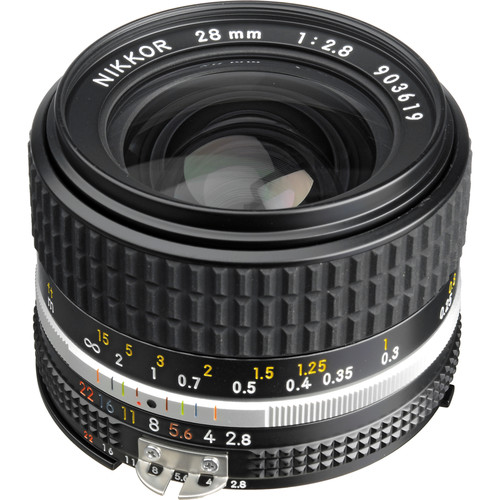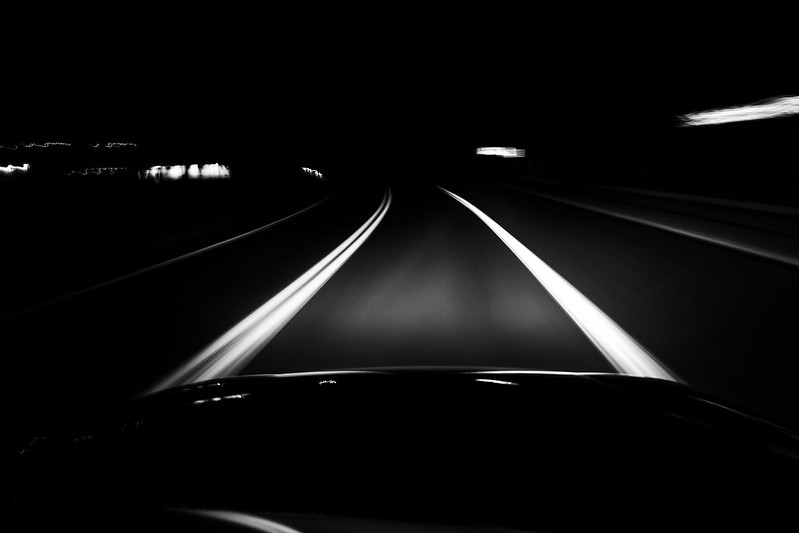Nikkor 28mm f/2.8 AIs

Introduction
The 28mm AIs has 8 elements in 8 groups and is tack sharp all over the place. It is praised by everyone who has ever written about it and cherished by everyone who has ever owned one.
But why is this lens so coveted? First, a little history lesson about how this AIs lens came to be.
Nikon made the 28mm f/2.8 AI lens along with so many other great AI lenses in the 1970s. But at one point Nikon decided to make a series of cheap lenses, scraping the bottom of the barrel. They called them the "E Series" and they made a 28mm E lens. It has 5 elements in it. All of the other E lenses are completely optically inferior to their big brothers. Nikon was just making something that covered the optical range to compete in the cheap camera market, they weren't making quality.
But something totally unexpected happened with the 28mm E, it was nearly as good as the 28mm AI. All of the other E lenses, meh, 28mm good.
Well, when Nikon developed AIs they took all of their other AI glass and just changed the aperture ring (and some paint colors) and released the lenses all as AIs. Except for the 28mm. They couldn't let their premium AIs product be the same as their cheap E product.
So they turned to their top optical engineer and told him to make the best 28mm lens possible. That is the 28mm AIs lens that came out in 1981. How good is that lens? It is still made and sold today, totally unchanged. Forty years later and the product is unchanged. It is THE sharpest 28mm lens ever and arguably the sharpest lens 28mm or wider.
The autofocus f/2.8 lens is based on the 5-element E series lens, the cheap, low-quality lens. This often happens with AutoFocus lenses, to keep costs down they skimp a little. I'm finding superior optics are kept for manual focus gear.
Specifications
The lens is setup with 8 elements in 8 groups.
Maximum Aperture: f/2.8
Minimum Aperture: f/22
The diaphragm is 7-bladed, producing high quality bokeh. Points of light are nice, well-controlled circles that blend smoothly into the background.
Manual focus only.
Construction
Made out of metal this lens is built to last, like all good Nikon/Nikkor prime lenses were.
The focus ring is covered in a ruber grip.
A spotting difference between the AI and the AIs versions is that the AI has the lens details engraved into the outside of the front. Meaning, they are on the focus ring and not inside of the filter ring. The AIS lens has the data engraved inside of the filter ring, as is common on most other Nikon/Nikkor lenses.
Performance
At first you might find it hard to spot the difference between photos from this lens and the 7/7 just "AI" lens (Nikon 28mm f/2.8 AI) but after using both when I look at the sharpness the differences is aparant. The images from the AI version are fine but the ones from the AIs are spectacular. There is outstanding micro-contrast making this lens supurb for black and white photography along with that killer sharpness.
Technically not a macro lens, the 28mm AIs is pretty close focusing making for a useful lens to get in close with your subject.
Alternatives
The obvoius comparison is to the Nikon 28mm f/2.8 AI and the E Series version of the 28mm and this lens rises above both of them. The E Series is fine and all, but it is a solid third place. The AI is great but the AIs is something to behold.
Examples
Following are some sample photos to demonstrate the power of this type of lens and some general uses which will likely yield good results. If you shoot things like these, then this lens may be a good one to think about adding to your camera bag.



Check out more photos I have shot with this lens in my Flickr Album.